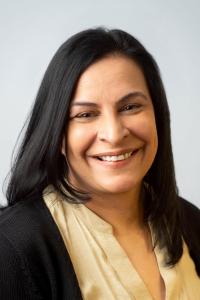Clinical Trial Begins for Promising Sickle Cell Gene Editing Treatment
Sickle cell disease (SCD), a group of inherited red blood cell disorders, affects as many as 100,000 people in the United States. Half of those with SCD will not live past the age of 50, and often at a young age SCD begins to cause symptoms that can include pain crises, stroke, and long-term organ damage. Bone marrow transplantation from a sibling whose tissue type (consisting of molecules called human leukocyte antigens) match the patient’s is the only known curative treatment—but just 15 percent of patients have a matched sibling donor. Unrelated donor transplants, using donor cells from volunteer registries such as Be the Match, haven’t been as successful as transplants from related donors; clinical trials are ongoing to improve outcomes. Additionally, African American and Hispanic patients, who make up the majority of those with sickle cell disease, are severely underrepresented in bone marrow registries, reducing their chance of finding a well-matched unrelated donor.
Promising new research is now bringing hope for patients with SCD. Monica Bhatia, MD, director of Columbia’s Pediatric Stem Cell Transplant Program, is participating in an international clinical trial evaluating the use of gene editing as a curative treatment for patients with sickle cell disease and the related condition, thalassemia. The study uses a technology called CRISPR-Cas9 to make changes to patients’ DNA—in this case to a gene known as BCL11A. CRISPR-Cas9 consists of two elements: a guide RNA, whose role is to locate and bind to the DNA to be changed, and Cas9, a protein that essentially acts as scissors and cuts the DNA at the location identified by the RNA. The modified DNA then repairs itself, and now contains a new set of instructions. In this case, when the BCL11A gene is turned off, production of fetal hemoglobin (HbF) restarts; elevated HbF levels have been shown to decrease disease severity in patients with sickle cell disease. The study’s premise is that when the body produces cells with HbF, and not sickle cells, the patient will essentially be cured of SCD.
The research is currently in the phase I/II stage, assessing the safety and efficacy of, and disease response to, the treatment among patients aged 18 to 35. Initial results have been so positive that the age limit has been lowered to 12. “Here’s how it works,” explains Dr. Bhatia. “First, patients undergo screenings to determine their fitness for the procedure. Then, the research team collects stem cells from them and sends them to a central facility where the cells are processed using CRISPR-Cas9 editing, then frozen and sent back to my team. Patients are then admitted to the hospital to receive chemotherapy that destroys their current bone marrow, followed by an infusion of the edited cells.” Patients usually remain in the hospital for four to six weeks and then return home. Afterward their physicians monitor them in the outpatient clinic for any side effects. Ultimately, patients are expected to see significant increases in HbF levels over time, rendering them sickle cell free.
Initial trials in adults have so far reported promising results. Across the board, these patients have seen clinically meaningful and sustained HbF and total hemoglobin levels, as well as expression of HbF in all red blood cells. Following these successes in adult patients, Dr. Bhatia is hoping for equally strong results with younger patients 12 and over. She also hopes in the future to expand gene-editing trials to younger participants. With continued success, the CRISPR-Cas9 gene editing process has the potential to revolutionize curative treatment options for patients with hemoglobinopathies such as SCD.

